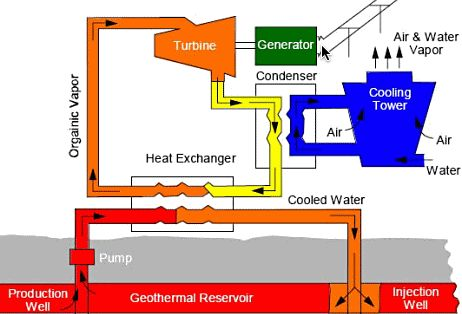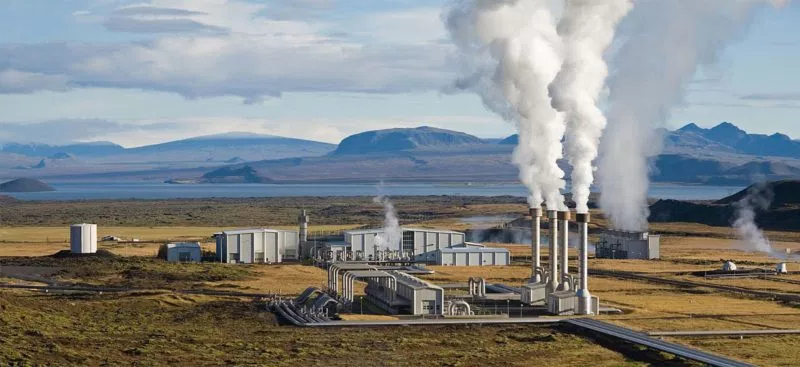GEOTHERMAL ENERGY
Disclaimer: Yes I know that this is a random blog post and totally not related to my other ones but
I ran out of interesting ideas.
What it is

Geothermal energy is heat energy stored inside the earth's crust or parts of its upper mantle. Being a renewable source of energy, geothermal energy is available at all times. It is considered to be a renewable energy source since there is an almost unlimited amount of heat being produced by Earth's core.
How it Works

A geothermal power plant is established in an area with high geothermal activity. An ideal place for a geothermal power plant would be above or near an underground heat source such as an underground reservoir of hot water. As you can see in this diagram to the left, the power plant takes advantage of the geothermal reservoir provided.
First, water is injected into the crust and passes through the geothermal reservoir.
Then, water is heated by the reservoir and is converted into steam.
Next, steam is pumped into the turbine to power it.
After that, turbine turns the generator which produced electricity that goes to consumers..
Steam exits the turbine and then is condensed back into water via the condenser and the cycle repeats over and over again.
Advantages
With proper heat reservoir management, geothermal energy can be run indefinitely. This is due to the almost unlimited supply of heat from the geothermal reservoir. Geothermal energy is also is the cleanest source of energy.
 It produces around none to minimal greenhouse gas emissions. The usual geothermal power plant produces about 122 kg of CO2 for every MW (megawatt) hour of electricity it generates. The average coal power plant produces 978 kg of CO2 for every MW hour. If you compare the amount of CO2 generated, the geothermal power plant CO2 emission are reduced by 87.5%.
It produces around none to minimal greenhouse gas emissions. The usual geothermal power plant produces about 122 kg of CO2 for every MW (megawatt) hour of electricity it generates. The average coal power plant produces 978 kg of CO2 for every MW hour. If you compare the amount of CO2 generated, the geothermal power plant CO2 emission are reduced by 87.5%.
Geothermal power plants provide long term cost certainty which means that electricity rates are more stable compared to other energy sources. By product heat of the power plant can be used for other things like food processing and fish farms
Disadvantages
Geothermal power plants are expensive to build. A single power plant costs around $2 million to $7 million to build though it can pay itself off after 5 to 10 years.
Geothermal power plants are very location specific. Sometimes a geothermal power plant could be miles away from a residential area which means more cost for the installation of power lines.
Installing a geothermal power plant can affect the land stability of the area. The installation of a power plant in Switzerland on January 1997 caused a 3.4 magnitude earthquake forcing construction workers to abandon the project.
Where is it used in Canada
Canada has no geothermal power plants for commercial use despite it having excellent geothermal resources; the most ideal places are located to the west and north of the country.
BC hydro has identified 16 ideal places in the province for geothermal power plant installation. The South Meager geothermal project, 55 km north of Pemberton, has the potential to generate 100 MW of energy which is enough power for 80,000 homes.
No comments:
Post a Comment